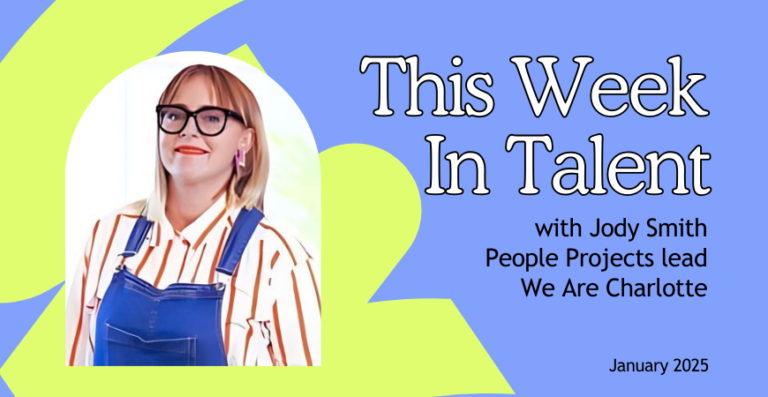Did you know that half of all Australians were born overseas or had a parent who was?
Did you know that more than 7.5 million people have immigrated to Australia since 1945?
Did you know that Australians identify with approximately 300 different ancestries?
Monday was Harmony Day (day 1 of Harmony Week), a day which allows us to recognise and celebrate cultural diversity and foster community inclusiveness.
There are countless benefits of encouraging and building diverse and inclusive workforces, for business, individuals, and communities alike. However national days of celebration like Harmony Day – as well as the recent International Womens’ Day and the upcoming National Reconciliation Week – are often used by corporations exclusively as a platform to celebrate those causes the the individuals impacted by them.
And while we should always strive to celebrate achievements in these fields, it’s just as important that we use these national days as an opportunity to re-assess where we are at with our diversity policies, and determine what more we can do to keep progressing with them.
So to help you get thinking about what you can do to really drive inclusive change within your talent team and wider organisation, here are 6 of our top performing articles from recent years that can help your organisations improve diverse hiring and engagement programs.
1. Moving from unconscious bias to conscious inclusion (while avoiding tokenism)
Ever heard of the Boston Symphony Orchestra blind audition? It’s a really interesting case study around the benefits of blind auditions (or interviews, in the case of talent acquisition). Or is it? If we need to conceal candidates’ personal information to improve diversity and inclusion, is that in itself… actually inclusive?
And considering ethnically diverse companies outperform those that aren’t by 35 per cent, can companies really afford to ask their workforces to conceal the elements of their personality and culture that actually makes them diverse?
Bedi Othow and Lorna Deng founders of DivTal think it’s time for organisations to stop thinking about how they can break unconscious bias, and start thinking about how they can improve their conscious inclusion.
2. How businesses can hire more refugees and gain a strategic advantage at the same time
Many refugees are victims of a qualifications paradox; the higher their credentials, the more they struggle to find meaningful employment. This is because of the restrictive professional accreditation processes many highly-qualified migrants struggle to overcome, higher language proficiency requirements and limited local professional networks.
This article outlines concrete steps that businesses can take to boost employment of refugees. It was written in the height of the 2021 pandemic lockdowns when the Australian borders had been slammed shut, but the learnings still apply today and into the future.
3. Recruiting for Diversity: Can we do better than gender balanced interview panels?
Many organisations now require more and more from their recruiters when it comes to bringing higher levels of diversity to their applicant lists, but the recruitment process in most organisations is still rife with opportunity for bias to impact the decision.
Diversity and Inclusion Consultant Dr. Bree Gorman outlines the 7 steps of a typical recruitment process, and looks at how recruiters can critically assess, and where required amend, each step, to make the recruitment and candidate journey more equitable.
4. “Culture Fit” is no excuse to be biased
Hiring managers, recruiters, and senior leaders have stereotypes about what makes a good candidate. They have beliefs about cultural background, education levels, schools people attended, grades achieved, and activities participated in. They may favour people from one organisation over another, which may or may not be indirectly correlated to an individuals’ particular background.
Kevin Wheeler shares his reasons for why companies need to move away from hiring for “culture fit” based on a pre-described set of corporate values.
5. In 2022, let’s stop diversity washing
When it comes to organisations’ diversity efforts, it’s easy to equate visibility with action. But it doesn’t work like that.
This is another great article from DivTal’s Bedi Othow and Lorna Deng which looks what organisations can actually do this year if they want to take their DEI initiatives further than just including pictures of BIPOC employees on their recruitment pages. They also share a handy way to counter the always frustrating question of “but shouldn’t it be about merit?”
6. How Lion closed their Gender and Diverse Paygap
You may have seen this article doing the rounds quite a bit in recent months, but that’s because it’s just so useful. When global beverage company Lion recognised that they had a gender pay gap in their company of 3.2% in their workforce – equal at the time to $6 million and impacting 1,600 employees – they realised that something needed to be done to close the pay gap and make their organisation more equitable for all employees.
Clint Williams, Talent Acquisition Leader at Lion joined us at ATC2021 to tell us how they identified their paygap, how they closed it, and what they continue to do to keep it close to make their salary policies fair for their new recruits entering their workforce.
What are you doing to make real progress with DEI in your workplace?
We want to hear from you. What did your organisation do on Harmony Day to move past celebration and into action to make a real difference boost diversity and inclusion within your workforce? Let us know and so we can spread the word of your good work!
Cover image: harmony.gov.au







